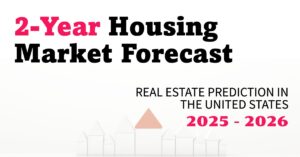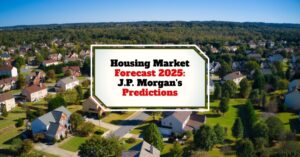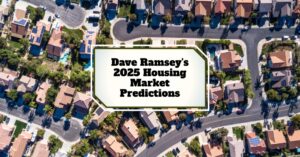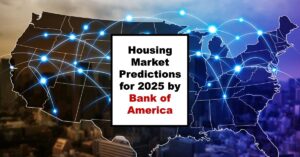Looking to invest in real estate or just curious about where home prices are skyrocketing? The top 10 housing markets with the largest home price growth at the end of 2024 saw gains ranging from 14.9% to a staggering 28.7%. These metros offer a glimpse into where demand is hottest and affordability is shifting. Let's dive into the details of these booming markets.
Top 10 Hottest Housing Markets Where Home Prices Are Soaring
Have you ever felt like the housing market is a rollercoaster? One minute prices are soaring, and the next they seem to be dipping. As someone who has been watching market trends closely for quite some time, I can tell you that understanding these fluctuations is key, whether you're a seasoned investor or a first-time homebuyer.
Recently, the National Association of Realtors® (NAR) released a report that highlighted some interesting shifts in the market. While many areas across the U.S. have seen home prices increase, a select few have experienced truly significant growth. So, where are these hotspots, and what's driving this surge? Let's explore the top 10 metros where home prices are climbing the fastest.
Why This Matters to You
Whether you're looking to buy, sell, or simply understand the market dynamics, knowing where prices are rising rapidly can provide valuable insights. For buyers, it highlights areas where competition may be fierce. For sellers, it pinpoints locations where you might get a higher return. And for investors, it can reveal promising opportunities.
The Landscape of Home Price Growth
According to the NAR report, a whopping 89% of the 226 U.S. metro markets saw home prices go up in the fourth quarter of 2024. Overall, the national median single-family existing-home price rose by 4.8% year-over-year, reaching $410,000. It's worth noting that between 2019 and last year, the median price skyrocketed by almost 50%!
This growth isn't uniform across the country. The South accounted for the largest share of single-family home sales in Q4 (45.1%), with prices increasing by 2.1%. The Northeast (10.6%), the Midwest (8%), and the West (4%) also saw price increases.
Interestingly, the priciest markets tend to be concentrated in California. San Jose, for example, experienced a surge of close to 10%, pushing the median home price to a staggering $1.9 million.
A Word of Caution
Before you pack your bags and head to these booming markets, it's important to remember that rapid price growth can also mean increased competition and potential affordability challenges. It's crucial to do your research and understand the local market conditions before making any major decisions.
The Top 10: Markets Leading the Charge
Now, let's get to the heart of the matter: the top 10 metros with the largest home price increases. Half of these markets are located in the Midwest, while the rest are scattered across the South and the Northeast. This geographical diversity suggests that different factors are at play in each region.
Here's the list, ranked by year-over-year median price increase:
| Rank | Metro Area | Median Home Price Increase (Year-over-Year) | Median Home Price |
|---|---|---|---|
| 1 | Jackson, MS | 28.7% | $251,600 |
| 2 | Peoria, IL | 19.6% | $172,500 |
| 3 | Chattanooga, TN | 18.2% | $346,700 |
| 4 | Elmira, NY | 17.6% | $167,800 |
| 5 | Fond du Lac, WI | 17.6% | $263,800 |
| 6 | Cleveland, OH | 16.4% | $221,900 |
| 7 | Bismarck, ND | 15.8% | $312,200 |
| 8 | Akron, OH | 15.5% | $209,600 |
| 9 | Blacksburg, VA | 15.0% | $311,900 |
| 10 | Canton, OH | 14.9% | $207,000 |
Let's take a closer look at each of these markets:
1. Jackson, MS
- Median Home Price Increase Year-over-Year: 28.7%
- Median Home Price: $251,600
Jackson, Mississippi, takes the top spot with a remarkable 28.7% increase in median home prices. This surge indicates a strong demand in the area, likely driven by its relative affordability compared to other markets. I believe that Jackson's growth is a testament to the fact that affordable housing is still a major draw for many Americans.
2. Peoria, IL
- Median Home Price Increase Year-over-Year: 19.6%
- Median Home Price: $172,500
Peoria, Illinois, comes in second with a 19.6% increase. This Midwestern city offers a lower cost of living and could be attracting buyers looking for more bang for their buck. With a median home price of just $172,500, Peoria stands out as an affordable option for many.
3. Chattanooga, TN
- Median Home Price Increase Year-over-Year: 18.2%
- Median Home Price: $346,700
Chattanooga, Tennessee, shows an 18.2% increase. Nestled in the scenic Appalachian Mountains, Chattanooga combines natural beauty with urban amenities, making it an attractive destination for those seeking a balanced lifestyle.
4. Elmira, NY
- Median Home Price Increase Year-over-Year: 17.6%
- Median Home Price: $167,800
Elmira, New York, is the only Northeastern metro on the list, with a 17.6% increase. Elmira's affordability and small-town charm may be drawing buyers seeking a more relaxed pace of life.
5. Fond du Lac, WI
- Median Home Price Increase Year-over-Year: 17.6%
- Median Home Price: $263,800
Fond du Lac, Wisconsin, also experienced a 17.6% increase. Located on the shores of Lake Winnebago, Fond du Lac offers a mix of outdoor recreation and community spirit, potentially appealing to families and outdoor enthusiasts.
6. Cleveland, OH
- Median Home Price Increase Year-over-Year: 16.4%
- Median Home Price: $221,900
Cleveland, Ohio, saw a 16.4% increase. As a major Midwestern city with a rich cultural scene and diverse economy, Cleveland's growth might be fueled by revitalization efforts and increasing job opportunities.
7. Bismarck, ND
- Median Home Price Increase Year-over-Year: 15.8%
- Median Home Price: $312,200
Bismarck, North Dakota, experienced a 15.8% increase. As the state capital and a hub for agriculture and energy, Bismarck's growth could be linked to the stability of its local economy.
8. Akron, OH
- Median Home Price Increase Year-over-Year: 15.5%
- Median Home Price: $209,600
Akron, Ohio, showed a 15.5% increase. Known for its history in the tire industry, Akron's resurgence may be driven by diversification and a renewed focus on innovation.
9. Blacksburg, VA
- Median Home Price Increase Year-over-Year: 15.0%
- Median Home Price: $311,900
Blacksburg, Virginia, saw a 15% increase. Home to Virginia Tech University, Blacksburg's growth could be attributed to the presence of a major educational institution and its associated economic impact.
10. Canton, OH
- Median Home Price Increase Year-over-Year: 14.9%
- Median Home Price: $207,000
Canton, Ohio, rounds out the list with a 14.9% increase. As the home of the Pro Football Hall of Fame, Canton's appeal might extend beyond its local economy, drawing in tourists and new residents alike.
Recommended Read:
Weekly Housing Market Trends: What's Happening in 2025?
Housing Market Forecast: CoreLogic Sees 4.1% Jump in Home Prices in 2025
Driving Forces Behind the Growth
What's causing these price surges? According to Realtor.com® senior economic research analyst Hannah Jones, high demand and low inventory are major factors. These markets have seen demand stay strong while the number of homes for sale remains below pre-pandemic levels. This combination creates a competitive environment, driving prices up as buyers compete for limited options.
Additionally, Jones points out that the Midwest, in particular, is seeing significant growth because it's the most affordable region in the country. Despite affordability challenges nationwide, the Midwest continues to attract buyers seeking value for their money.
As NAR Chief Economist Lawrence Yun notes, “Record-high home prices and the accompanying housing wealth gains are definitely good news for property owners. However, renters who are looking to transition into homeownership face significant hurdles.”
What Does This Mean for Homebuyers and Sellers?
For homebuyers, these trends mean that competition in these markets is likely to be fierce. Be prepared to act quickly, have your financing in order, and consider making a strong offer. It may also be wise to explore alternative strategies, such as expanding your search area or considering fixer-uppers.
For sellers, these are prime opportunities to get top dollar for your property. However, it's essential to price your home strategically and work with an experienced real estate agent who understands the local market dynamics.
The Silver Lining: Affordability Improvements
While rising home prices can be daunting, there's a silver lining. According to the NAR report, housing affordability has seen a slight improvement. The monthly mortgage payment on a typical home with a 20% down payment has decreased by 1.7%, or $37, to $2,124 from the same time last year.
Additionally, 11% of the metros saw price declines during the same period. As Yun suggests, “While recognizing many workers may not have the option to relocate, those who can or are willing to move may find more affordable conditions, especially given the wide variance in home prices nationwide.”
Final Thoughts
The top 10 housing markets with the largest home price growth offer a fascinating snapshot of the current real estate landscape. While these markets may present challenges for buyers, they also represent opportunities for sellers and investors. As the market continues to evolve, staying informed and adaptable is key to making smart real estate decisions.
Work with Norada in 2025, Your Trusted Source for Investment
in the Top Housing Markets of the U.S.
Discover high-quality, ready-to-rent properties designed to deliver consistent returns.
Contact us today to expand your real estate portfolio with confidence.
Contact our investment counselors (No Obligation):
(800) 611-3060
Recommended Read:
- Housing Predictions 2025 by Warren Buffett's Berkshire Hathaway
- New Tariffs Could Trigger Housing Market Slowdown in 2025
- Housing Market Forecast 2025: Affordability Crisis Will Continue
- Lower Mortgage Rates Will Reignite the Housing Demand in 2025
- NAR Predicts 6% Mortgage Rates in 2025 Will Boost Housing Market
- Housing Market Forecast for the Next 2 Years: 2024-2026
- Housing Market Predictions for the Next 4 Years: 2025 to 2028
- Housing Market Predictions for Next Year: Prices to Rise by 4.4%
- Housing Market Predictions for 2025 and 2026 by NAR Chief
- Real Estate Forecast Next 5 Years: Top 5 Predictions for Future
- 2008 Forecaster Warns: Housing Market 2024 Needs This to Survive
- Real Estate Forecast Next 10 Years: Will Prices Skyrocket?












